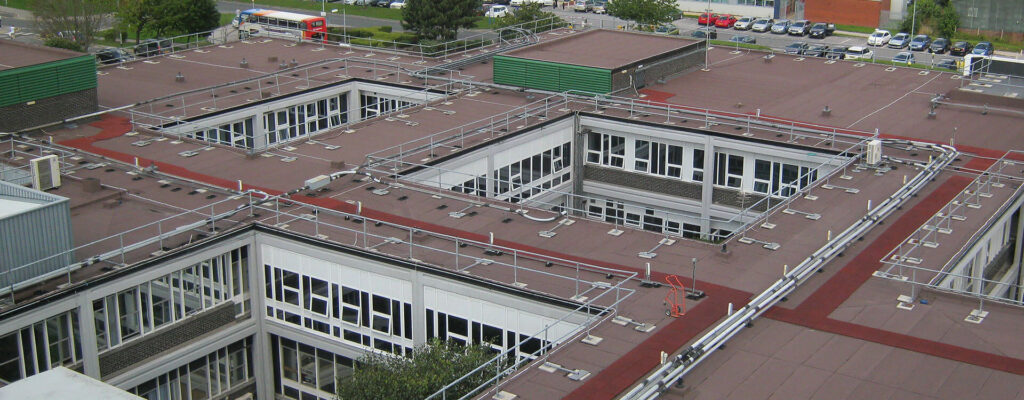A Mastic Asphalt Screed can provide the Air and Vapour Control Layer (AVCL) necessary to avoid a build-up of condensation in a flat roof construction.
An advantage of taking this approach is that the Mastic Asphalt Screed can also be laid to falls, thereby helping to achieve the roof drainage requirements at the same time.
An Air and Vapour Control Layers are an integral part of any thermal element in a building, whether a floor, wall, pitched roof or flat roof.
Traditionally, it has only been referred to as a Vapour Control Layer (VCL), but the terminology has shifted to reflect the layer forming part of a building’s airtight envelope.
Why is an AVCL needed in a flat roof build-up?
The material acting as an AVCL restricts the movement of air and moisture vapour through the construction. Mastic Asphalt is a material of very high vapour resistance which also forms a continuous airtight barrier over the surface of a flat roof deck.
AVCLs are always positioned on the warm side of the thermal insulation layer, where air is at or close to the internal building temperature. If that warm air leaks through the building structure, it comes into contact with surfaces on the cold side of the insulation layer.
As it drops in temperature, it cannot hold the same quantity of moisture vapour and the excess is deposited as condensation.
An AVCL is therefore critical to stopping the leakage of warm air from inside the building and reducing the possibility of condensation in the upper layers of a flat roof construction.
Section 4.5.6 of BS 5250 ‘Control of condensation in buildings’ goes into greater detail about design considerations for achieving an effective AVCL.
A building featuring a ‘conventional’ warm flat roof build-up requires an Air and Vapour Control Layer as part of the roof construction.
In an inverted warm roof, the waterproofing installed on the roof deck also acts as the AVCL, although a hot melt product can be installed on a Mastic Asphalt Screed that is creating falls.
What thickness of Mastic Asphalt Screed is needed to act as an AVCL?
The Mastic Asphalt Council (MAC) publishes guidance on Mastic Asphalt Screed, advising a minimum screed thickness of 13mm to be suitable as a Vapour Control Layer. The screed should be laid on a glass fibre tissue separating layer.
Mastic Asphalt is a durable material, and a screed acting as an AVCL will last for the lifetime of the building. It cannot be compacted, so it provides a strong, stable base for the thermal insulation, car park deck build-up and waterproofing system laid over it.
IKO Permascreed is a Mastic Asphalt Screed capable of providing roof falls and acting as an AVCL at the same time. It has no moisture content and therefore no curing time, and it cools rapidly so can be trafficked as soon as it reaches ambient temperature.
Not only does it act as an AVCL in the finished roof, but it also provides temporary waterproofing to the structural deck prior to installation of the roof finish. For enquiries or technical advice regarding our Mastic Asphalt Screed solutions, contact us.



